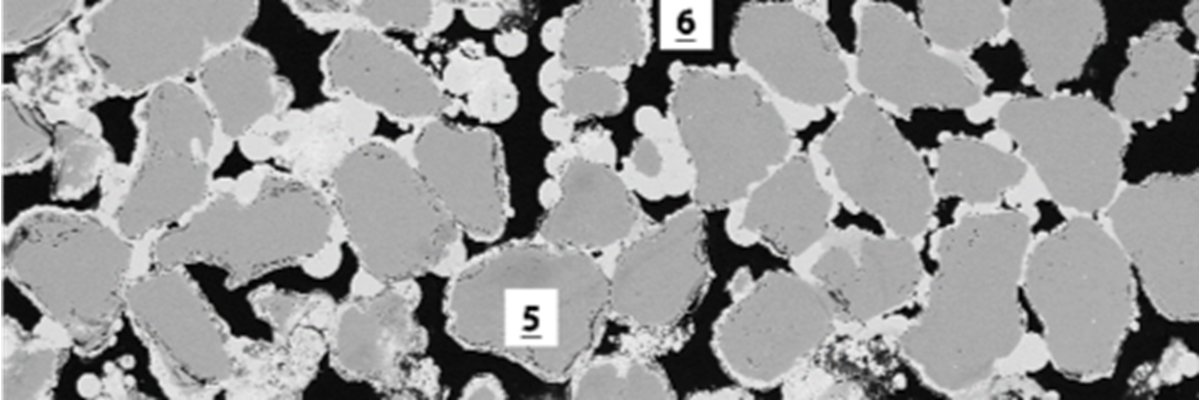Aggressive corrosion of steel by a thermophilic microbial consortium in the presence and absence of sand.

Overview
The integrity of carbon steel pipelines used in the oil and gas industry can be compromised by under-deposit corrosion (UDC) and microbiologically influenced corrosion (MIC) phenomena. Microbiologically influenced corrosion (MIC) of carbon steel by a thermophilic microbial consortium was investigated in the presence and absence of sand using surface analysis techniques and 16S rRNA gene sequencing. It was found that the microbial consortium caused severe localised corrosion to carbon steel and the presence of sand deposits resulted in distinct corrosion and microbiological events on the steel surface.
Figure 1; FESEM images from cross-sectioned carbon steel samples after immersion under biotic conditions in CO2/N2 containing solution at 55 °C for 36 days. a) Sand free and b) sand-deposited steel surface. [1] Metal; [2] corroded area “cavity”; [3] delimiting layer; [4] top surface layer; [5] sand grain and [6] resin.
Objectives
This research aims to improve the understanding of under-deposit corrosion (UDC) processes in the oil and gas production environment which is essential to develop more effective strategies to control internal corrosion in carbon steel pipelines.
Figure 2; Visible light microscopy 3D-images of the entire carbon steel surfaces. Biotic tests (top images): a) sand-free and b) sand-deposited steel surface. Abiotic experiments (lower images): c) sand-free and, d) sand-deposited steel surface.
Why is it important?
This study is closely related to industrial applications, highlighting the importance of conducting tests for under deposit corrosion incorporating microorganisms isolated from the field environment. Otherwise, the severity of localised corrosion could be severely underestimated.
Get the paper!
Citation
E.M. Suarez, K. Lepkova, B. Kinsella, L.L. Machuca, International Biodeterioration & Biodegradation 137 (2019): p. 137–146. doi: 10.1016/j.ibiod.2018.12.003.




